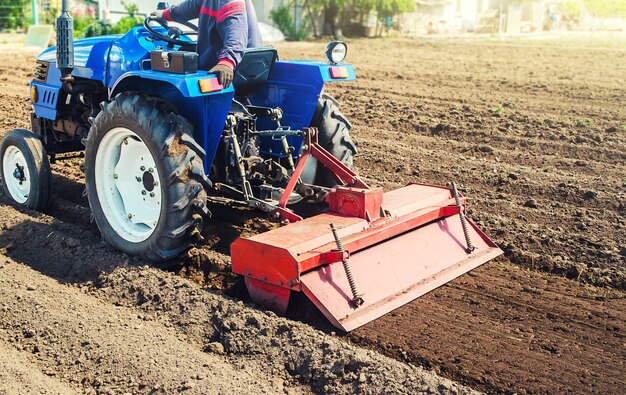A rotary tiller is an essential tool for breaking up compacted soil, improving aeration, and preparing a smooth seedbed for planting. Whether you are working on a small garden or a large farm, using a rotary tiller correctly ensures efficient land preparation while preserving soil health. This guide outlines best practices for using a rotary tiller effectively.
1. Choose the Right Rotary Tiller
Selecting the appropriate rotary tiller depends on the size of your land, soil type, and tractor compatibility. Consider the following options:
- Forward-rotation tillers: Blades rotate in the same direction as the wheels, suitable for light-duty tilling.
- Counter-rotation tillers: Blades rotate opposite to the wheels, offering deeper tillage for tough soil.
- PTO-driven tillers: Attach to tractors and provide powerful tilling for larger fields.
2. Prepare the Land Before Tilling
Proper preparation ensures smooth operation and prevents damage to the tiller.
- Remove large debris such as rocks, branches, and weeds that can obstruct the tiller.
- Mow tall grass before tilling to prevent tangling in the blades.
- Check soil moisture—tilling wet soil can cause compaction, while extremely dry soil may be too hard to break up.
3. Adjust the Tiller Settings
To optimize tilling performance, adjust the tiller depth and speed:
- Set the tilling depth according to soil conditions—shallower for light aeration and deeper for breaking hardpan layers.
- Adjust the tractor speed to ensure consistent soil turnover without overworking the tiller.
- Ensure proper PTO speed to match the recommended revolutions per minute (RPM) for your tiller model.
4. Operate the Rotary Tiller Efficiently
- Start at one end of the field and move in straight, overlapping passes to ensure even coverage.
- Keep a steady pace—moving too fast may leave clumps, while too slow can overwork the tiller.
- Monitor soil texture—if soil is too clumpy, consider making an additional pass at a shallower depth.
5. Maintain the Rotary Tiller
Regular maintenance extends the lifespan of your tiller and ensures optimal performance.
- Inspect blades for wear and replace them when they become dull.
- Check and lubricate moving parts such as the PTO shaft and gearbox.
- Clean the tiller after use to prevent soil buildup and rusting.
6. Follow Soil Conservation Practices
To prevent soil degradation and erosion:
- Use cover crops to maintain soil structure and fertility.
- Avoid excessive tilling to preserve beneficial soil organisms.
- Practice contour tilling on slopes to reduce runoff.
Using a rotary tiller efficiently improves soil aeration, reduces labor, and enhances seedbed preparation. By choosing the right tiller, preparing the land properly, adjusting settings, and maintaining equipment, farmers can achieve optimal land preparation while preserving soil health.
Join 'Farmers Mag' WhatsApp Channel
Get the latest Farming news and tips delivered straight to your WhatsApp
CLICK HERE TO JOIN






